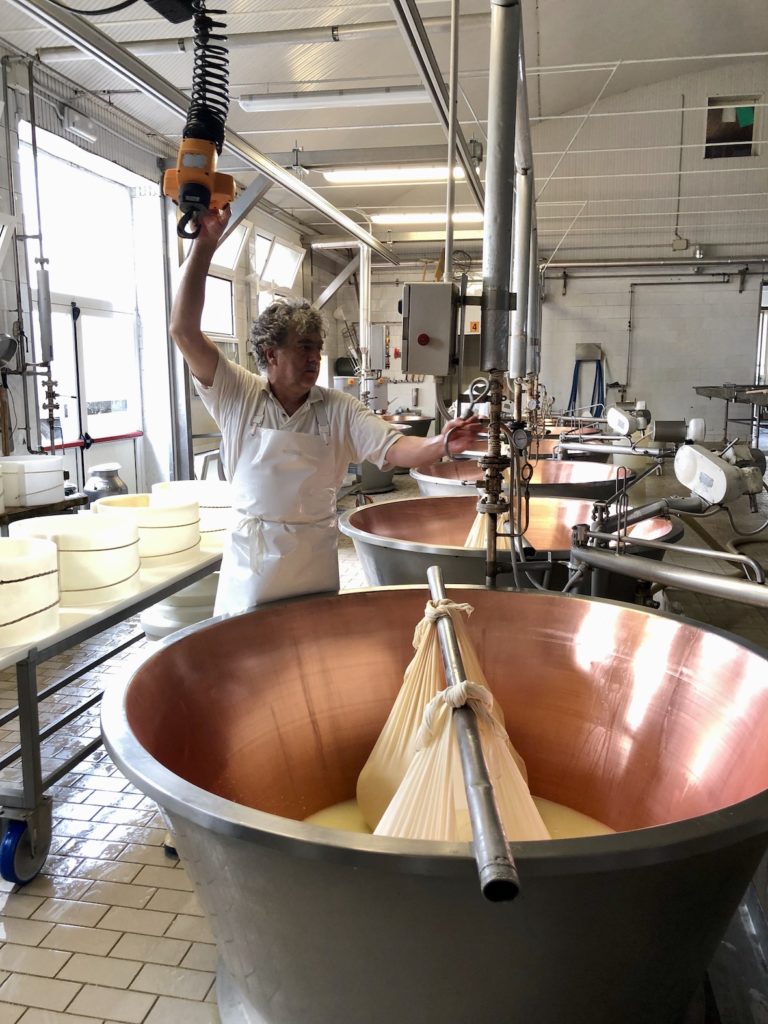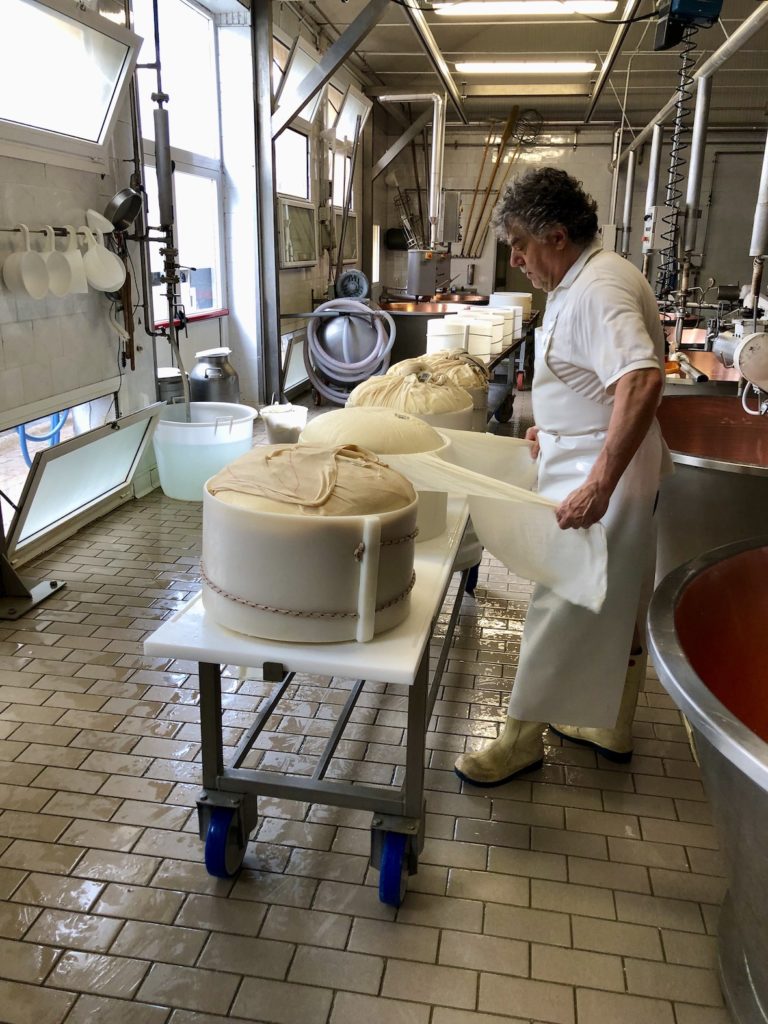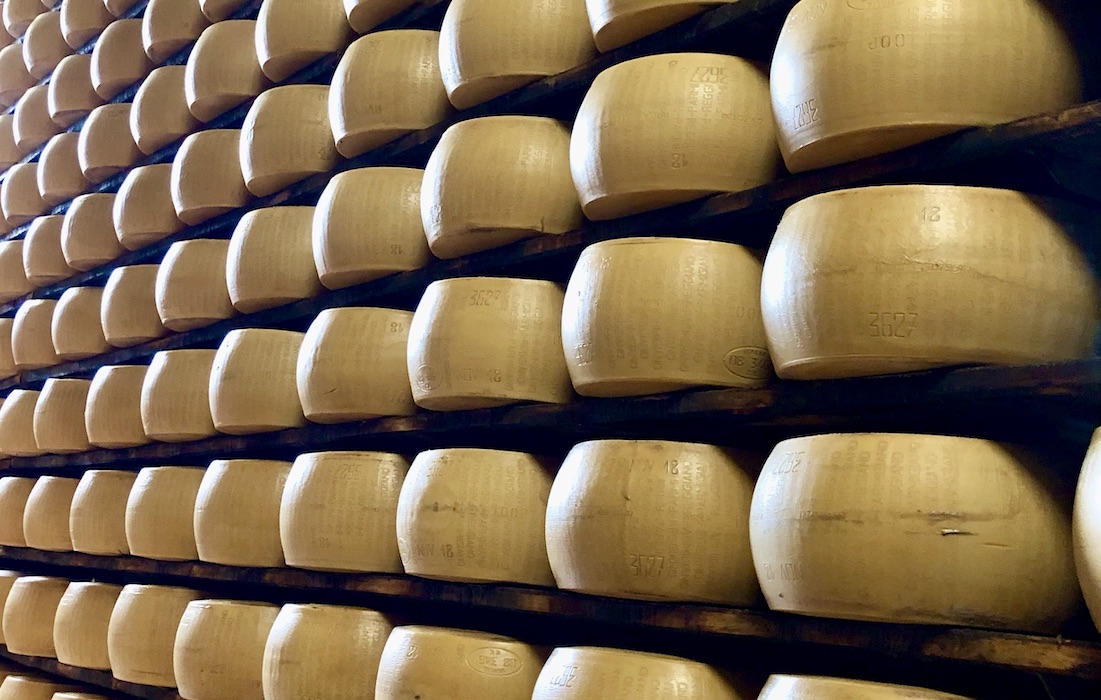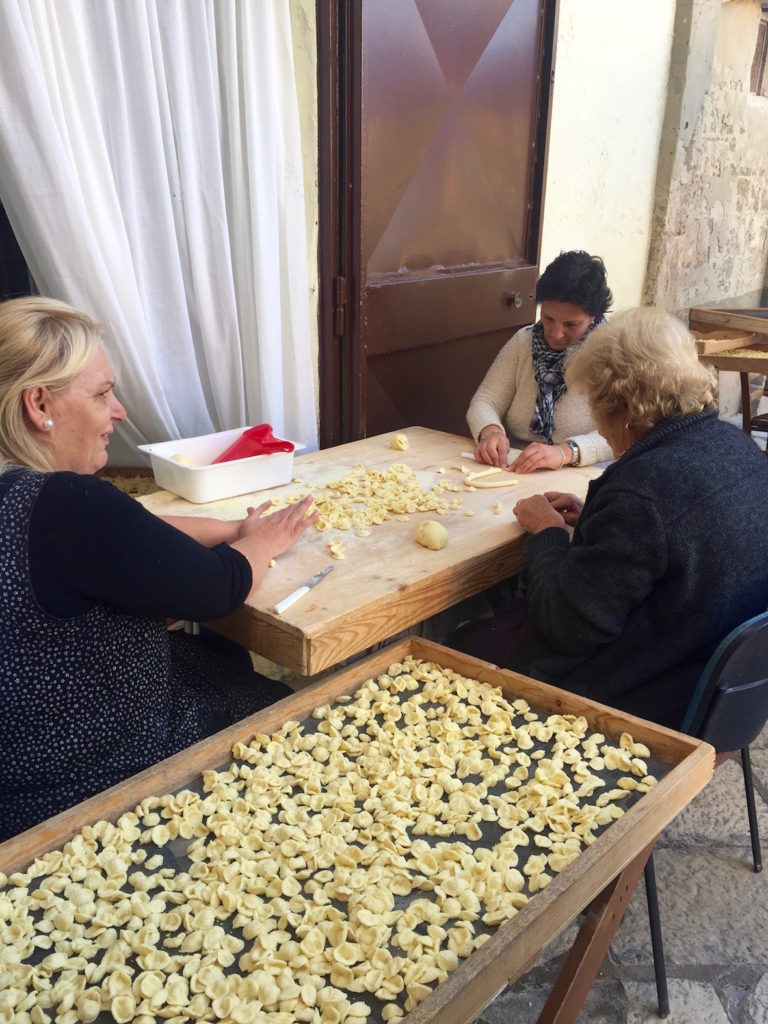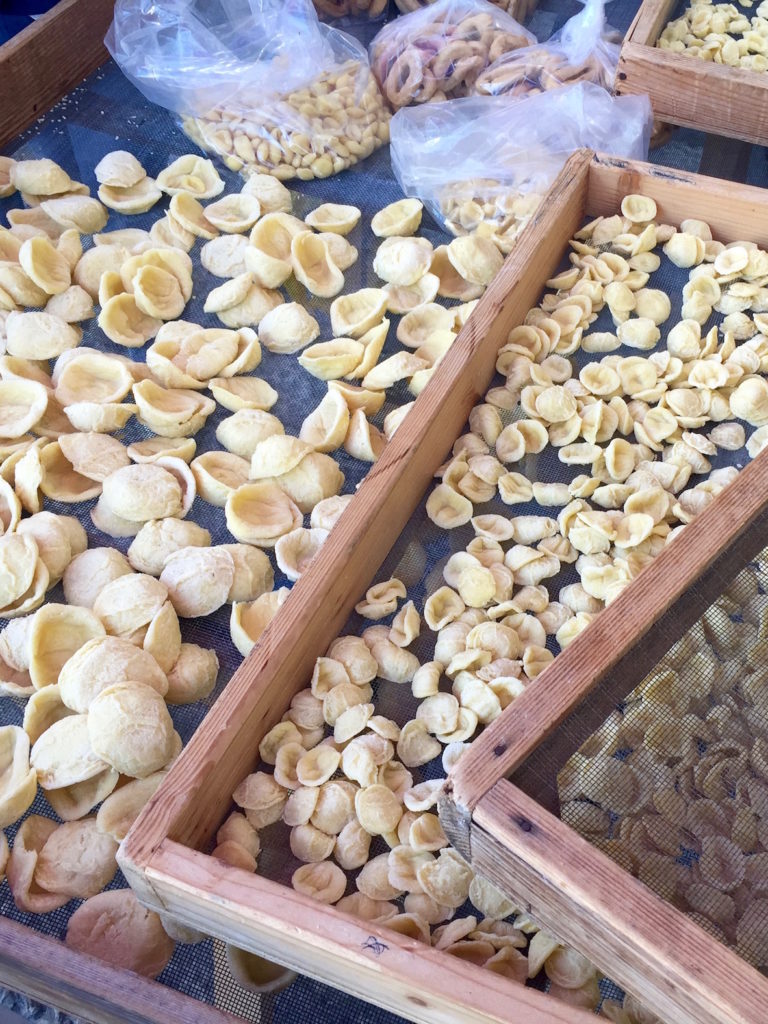14 Aug HOW TO EAT PARMIGIANO REGGIANO – LET ME COUNT THE WAYS!
Sitting at the Trattoria Corrieri in Parma we are presented with a plate piled high with golden, crumbling wedges of Parmigiano Reggiano, and a knife and fork. This is how they do it in Parma. At Luca’s mother’s house we spoon great clouds of the golden cheese onto our pasta. At our friend Theo’s place, we drizzle the best balsamic vinegar over hunks of Parmigiano and eat it with pears. Luca simmers Parmigiano rinds in his winter broth.
Parmigiano is perhaps the best known, the best loved and the most versatile of Italian cheeses. Italians have been making it since the thirteenth century, mainly in the region that takes in Bologna, Parma, Reggio Emilia and Modena.
As part of our Unexpected Riches – Discovering Emilia Romagna tour we travel up into the lower part of the Apennine Mountains above Bologna to visit a caseificio or cheese maker. This is a cooperative of milk producers who raise the original Bruna Alpina cows, the breed that has traditionally produced the milk used for Parmigiano in this area. While other producers have switched to the more productive Friesian style cow, the milk the Bruna Alpina produces has a unique nutty taste and a much higher content of cream.
The cooperative aims to compete with larger companies on the basis of the quality of their cheese. As a group they can combine their technologies and reduce production costs to make this type of process financially viable. They are passionate about their cattle and the quality of the type of cheese produced in the mountain. They belong to a new group called the Consortium of Mountain Producers that is promoting traditional food production.
We make a day trip of this, heading out of Bologna early so that we’re at the caseificio in time to see the cheese being made. If we’re lucky we can see the Bruna Alpina cattle grazing in fields along the way. And of course, the highlight of all this for many people is a tasting of this very special cheese.
Above is a short clip from our visit to Caseificio Pieve Roffeno last year, showing the cheesemakers shaping the soft cheese into what will become a wheel of Parmigiano Reggiano. It’s just one step in a very long process that has been done like this for centuries and strictly regulated by the Italian Parmigiano Consortium for many years.
We’re planning to run our Unexpected Riches – Discovering Emilia Romagna tour again in mid-2021. Please get in touch for more details.
